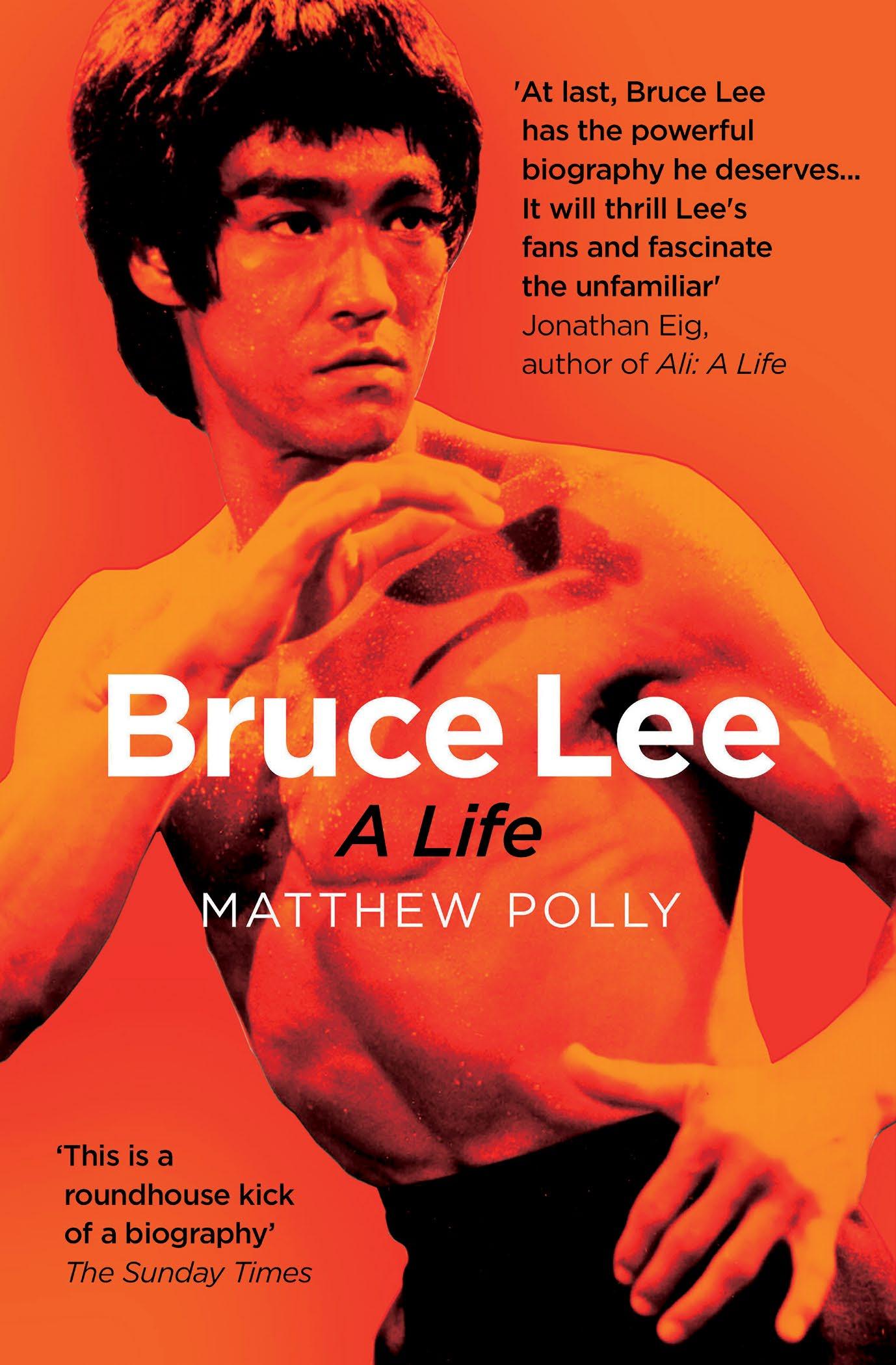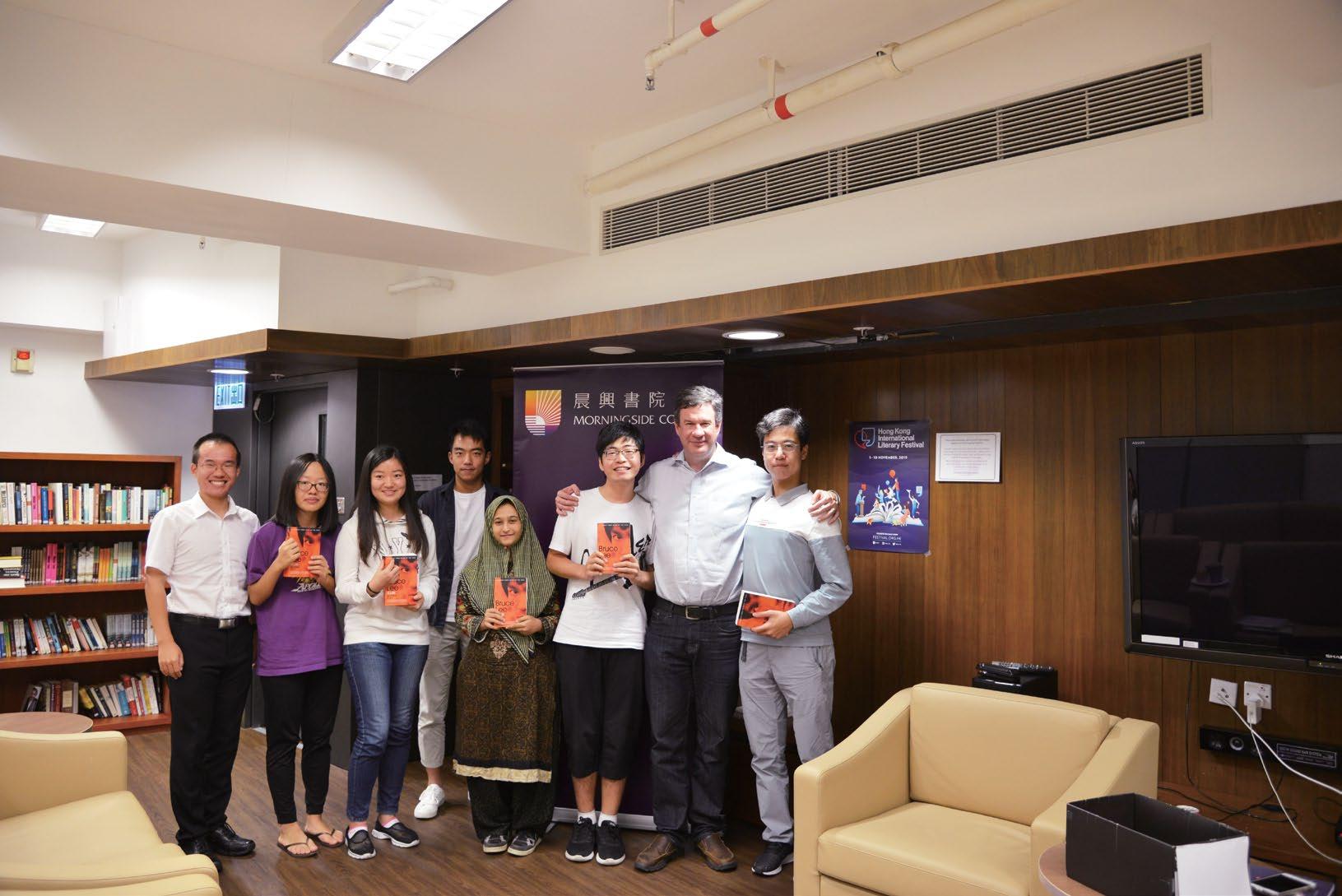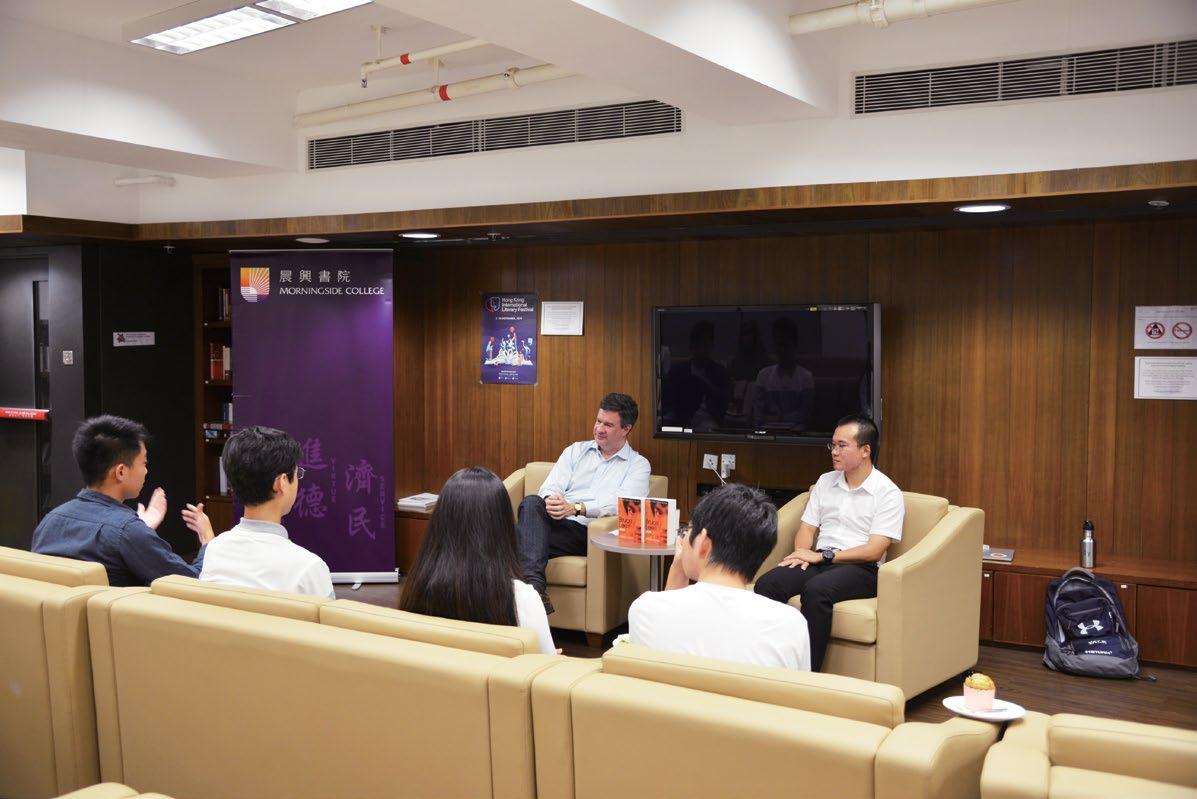
3 minute read
Bridging Cultures: Writers Series with Matthew Polly
MC MEETS

BRIDGING
CULTURES WRITERS’ SERIES WITH MATTHEW POLLY BRIDGING Matthew Polly shares his experiences as a student of the martial arts and biographer CULTURES of Bruce Lee. Writers Series with Matthew Polly
By Xiehe Guo By Peter Guo
文化橋樑 – 包默思談李小龍 文化橋樑 ——
包默思分享因李小龍而習武的經歷與及為李小龍作傳的過程 郭諧和 著 包默思談李小龍
郭諧和 著

Bruce Lee is a larger-than-life figure with worldwide renown: he was not only a martial arts icon but also a movie star whose influence spread beyond national boundaries. That is one reason Morningside College, with a mission to transcend cultural barriers, featured Matthew Polly, author of Bruce Lee: A Life (2018), as a Writers Series speaker in November 2019.
Polly became fascinated with kung fu the moment he saw Bruce Lee star in Enter the Dragon (1973), and that fascination turned into passion as he took gap years during college to become the first American disciple in Henan’s famed Shaolin Temple. A Princeton graduate and Rhodes Scholar, Polly first became an author when he wrote the bestselling American Shaolin: Flying Kicks, Buddhist Monks, and the Legend of Iron Crotch (2006), a book about his experiences as a student of Chinese martial arts at the Shaolin Temple. In 2018, after extensive research and interviews in Hollywood and Hong Kong and condensing over 2,500 pages of primary materials, Polly published his Bruce Lee: A Life, the first English-language biography of Bruce Lee.
Polly opened his talk by illustrating Lee’s enormous influence. Enter the Dragon, which starred Bruce Lee and was released a month after his untimely death, “changed the course of film-making in both the East and the West”. In the West, Bruce Lee almost single-handedly established the modern action choreography we see in movies today, such as that in the Marvel franchise. In addition, Lee also changed how the West viewed East Asians, as houseboy and villain stereotypes were replaced with kung fu fighting heroes. In the East, as Polly pointed out, Bruce Lee “helped to launch Hong Kong cinema as an international phenomenon”, paving the way for the success of other Asian actors in Hollywood in the decades that followed. 李小龍是個舉世聞名的傳奇人物:他不僅是武術界 的標誌人物,還是影響力超越國界的電影明星。晨 興書院一向肩負突破文化障礙的使命,故在 2019年 11 月邀請了《李小龍的一生》(2018)的作者包默思來 訪主持作家系列講座。
包默思( Matthew Polly 的漢名)初看到李小龍在 《龍爭虎鬥》(1973)中的演出就對功夫著迷,這種熱 愛繼而變成對武術的追求,於大學休學期間到河南 著名少林寺成為第一個美裔弟子。包默思是普林斯 頓的畢業生和羅德獎學金得主,在他撰寫其在少林 寺學習功夫經歷的暢銷書《少林很忙》(2006)時成為 作家。他在荷里活和香港進行廣泛的研究和採訪, 並整合超過 2,500頁的原始資料後,於 2018 年出版 了第一本關於李小龍的英文傳記 ——《李小龍的 一生》。
包默思在講座上首先闡述了李小龍的龐大影響力。 在李小龍英年早逝一個月後所上映由他主演的《龍 爭虎鬥》,「改變了東方和西方的電影史」。在西方, 李小龍幾乎一手建立了我們今天在電影中看到的現 代武打動作編排,例如漫威系列電影中的武打場 景。此外,李小龍還改變了西方人對東亞人的刻板 印象,男僕和惡棍的角色被功夫英雄所取代。包默 思指出,在東方,李小龍「把香港電影帶入國際舞 台」,也為繼後的亞裔演員鋪平道路,讓他們成功打 入荷里活這個國際市場。
Polly noted that Lee owed his immense success to his background. Though widely regarded as a famous movie star of Chinese descent, Bruce Lee, born in San Francisco, had a Eurasian ancestry and a multicultural upbringing in Hong Kong, where he learned English in school and practiced kung fu with the legendary master Ip Man. Such experiences gave Lee unusual confidence and openness. When he moved to the United States, at a time when knowledge of martial arts was kept from people outside the Chinese community, Bruce Lee taught kung fu to people of all ethnicities, despite opposition from other Chinese martial artists, and later to Hollywood actors and famous athletes. Lee’s openness developed into what Polly called a “postracial” philosophy, a belief that people are human beings first before they belong to a race or ethnicity.
As a martial artist, Polly also shared with Morningside students his understanding of the spiritual side of kung fu. When asked whether he gravitated more towards martial arts or the philosophy behind it, Polly answered by relating the martial arts to fighting one’s ego. “Kung fu done properly is Buddhism,” Polly further noted, “because Zen Buddhism advocates the non-rational frame of mind through repetition.” Years of kung fu and meditation instilled strength in Polly: “I thought that if I went through something…brutal like this, I would come out the other end and find a certain amount of courage.”
For Polly, that courage is not just the result of the day-to-day grind of kung fu practice but also the crystallisation of a deep appreciation of a new culture. Such an appreciation is what Morningside values and is also one of Bruce Lee’s most important legacies. 包默思認為李小龍的無比成就與他的背景不無關 係。雖然李小龍被視為著名的華裔電影明星,但出 生於美國三藩市的他,有著歐亞血統,並在香港接 受了多元文化教育。他在香港學校學習英語,並與 傳奇大師葉問一起練習功夫。這樣的經歷培養出不 同尋常的自信和開放態度。在李小龍初移居美國的 那個時代,是不允許將武術傳授給華人社區以外的 人的,但他不顧其他中國武術家的反對,教授不同 種族的人功夫,後來更將之傳授給荷里活演員和著 名運動員。李小龍的開放態度發展成了包默思所說 的「後種族」哲學,即認為人們在屬於某個種族或民 族之前,首先是人類大家庭的一員。
作為一名武術家,包默思還與晨興學生分享了他對 功夫精神層面的理解。當被問及究竟是武術還是武 術背後的哲學更吸引他時,包默思將武術視為自 我心理的鬥爭。「功夫習得其法、用得其所就是佛 教」。包默思進一步解釋此乃「通過反復練習同樣的 動作來達到佛教所提倡的非理性( non-rational)心 境。」多年的功夫訓練和冥想給包默思注入了強大的 力量:「我想如果我經歷了如此艱辛的磨煉,我會從 另一端走出來,抱有更大的勇氣。」
對包默思來說,這種勇氣不僅僅是每天苦練功夫的 成果,而且是深深欣賞一種新文化的結晶。這種欣 賞態度是晨興書院所珍視的,也是李小龍遺留後世 的一塊瑰寶。



